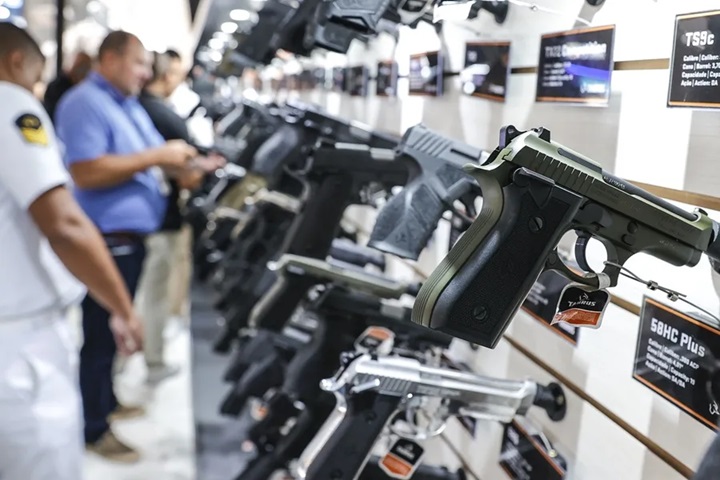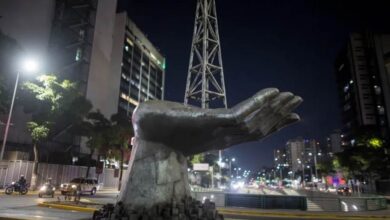Venezuelan Arsenal Grows as Russian Ties Face Limits in Cash and Crude

An Americas Quarterly report shows that, under parading tanks and promises of missiles, Venezuela is tightening its bond with Russia. But behind the theater lies a harsher truth: Maduro wants investment, oil output, and loans. Moscow offers symbolism, old contracts, and little new cash.
Parade Power and Realpolitik
On Venezuelan Independence Day, President Nicolás Maduro made two declarations. One, he promised to build a missile defense system with Russian support. Two, he showed off the gear to back it up—rolling Russian tanks, rocket launchers, and armored vehicles through downtown Caracas in a show of strength. But the real headline had landed the day before. Venezuela and Russia’s state arms conglomerate Rostec had quietly announced the opening of a long-delayed Kalashnikov factory in Maracay. It would produce 70 million cartridges a year and manufacture AK‑103 assault rifles.
The plant had sat unfinished for years, mired in scandal and silence. Now it’s humming, and Maduro is touting it as a flag of sovereignty—proof, he says, that Venezuela can stand up to sanctions with its arsenal, not just rhetoric. For Russia, it’s a strategic foothold in Latin America. “This is an important step,” said Rostec’s Oleg Yevtushenko, promising more to come. For Maduro, the plant delivers something rarer than ammo: a narrative of momentum at home.
Behind the Embrace: Old Deals, New Uses
The Venezuelan-Russian relationship didn’t appear overnight. It has been built slowly, across more than 350 agreements and at least a dozen presidential summits. In public, Maduro and Vladimir Putin talk about “perfect harmony.” Behind closed doors, that harmony is mainly about two things: weapons and oil.
Russia is now Venezuela’s largest arms partner—and the only one still shipping high-grade equipment. In return, Russian intermediaries have helped Caracas route oil past U.S. sanctions. Tankers offload Venezuelan crude in Asia, often relabeled or mixed, then quietly refined in India. This game of hide-the-barrel has kept cash flowing. Russia also sends fertilizer, food, vaccines, and medical supplies. Russian tourists fly in; MIR cards work at some Venezuelan ATMs. A binational bank, Evrofinance Monsnarbank, has operated in Caracas since 2014.
But even this long courtship has its ceilings. In May, Maduro joined Putin in Moscow to celebrate 80 years of bilateral relations and pitch a 10-year partnership. He went home with photos and press clips—but no new credit line. For a country that once borrowed $34 billion from Moscow, primarily for weapons, the silence was deafening.
U.S. Pressure, Sanctions—and a Familiar Script
As Caracas draws closer to Moscow, Washington is tightening its screws. The Biden administration has alternated between soft diplomacy—restoring Chevron licenses, negotiating prisoner swaps—and stiff sanctions. In July, the U.S. designated the so-called Cartel de los Soles, a network allegedly led by Maduro himself, as a global terrorist organization. On August 7, the State Department doubled the reward for his arrest to $50 million.
That choreography feels familiar. Just as Cuba once served as the Soviet Union’s outpost in the Americas, today’s Venezuela is, for Russia, a way to needle the U.S. from its geopolitical doorstep. But unlike Cuba, which drew massive infrastructure investments from Moscow, Caracas now mostly gets PR boosts and quiet logistical workarounds. As U.S. sanctions stack up, Venezuela’s ruling party is trying to turn isolation into a badge of honor. A sweeping 2025–2031 development blueprint passed by the National Assembly now points explicitly to Russia, China, and Iran as preferred partners.
In that context, even a modest Russian arms factory becomes more than machinery—it’s political oxygen.
Crude Math and Strategic Ceilings
The future of this alliance doesn’t depend on tanks in parades. It depends on oil—and whether Russia is still willing or able to bankroll Venezuela’s recovery. The early days of the partnership were flush. Russia helped build joint ventures with PDVSA, the state oil giant, and Venezuela rose to become its sixth-largest military client.
But today, Russia has its war to fund. Its exports are increasingly drawn toward China. And Venezuela, for all its rhetorical firepower, is producing only 120,000 barrels a day with Russian help—barely a trickle in a sea of need. According to Reuters and IMF data cited by Transparencia Venezuela, bilateral trade with Russia topped out at just $1.2 billion in 2024—less than a third of what Moscow did with Brazil or Mexico.
“The relationship is real, but the resources aren’t,” said Mercedes de Freitas of Transparencia Venezuela. “If it were up to Maduro, we’d be a Russian colony. But the next steps aren’t up to him—they’re up to Putin.”
Even symbolically, the alliance has limits. When Venezuela lobbied hard for BRICS membership, Russia stayed quiet. There was no push, no endorsement. Moscow sees Caracas as a megaphone, not a market.

EFE@André Coelho
The Price of Parades
So what’s left? Missiles and anti-missile dreams. Rifle cartridges stamped “Hecho en Maracay.” And headlines that play better in Plaza Bolívar than in Beijing or Brussels.
But oil output won’t spike without cash. Factories don’t run on friendship. And sanctions won’t lift for parades. For now, Venezuela’s alliance with Russia is real—but mostly defensive. It delivers just enough fuel to claim sovereignty, without the growth Maduro desperately needs.
Also Read: Haiti’s Most Wanted: Barbecue, Bounties, and the Fragile Theater of Power
That’s the gamble. If Moscow steps up again—with credit, with tech, with investment—the Maduro regime could get a second wind. But if the loans stay locked and the oil keeps trickling, Caracas may find that “perfect harmony” is just another line in a song no one else is singing.




